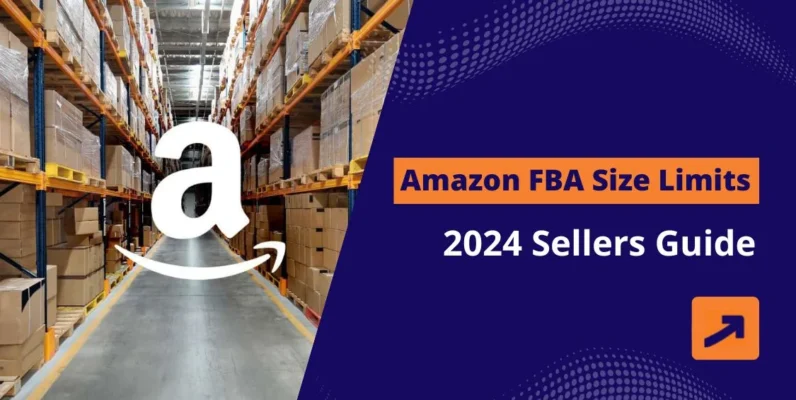As an experienced Amazon seller or just beginning your journey as a 3P seller, you may have encountered the term “QTY.” Although it seems to be a very simple concept, its subtleties are vital for managing inventory, optimizing listings, and ensuring a seamless shopping experience for your customers.
Storage and distribution management would make or break a seller on Amazon by 2025. This article will tell you what QTY means on Amazon, what parts it plays, and practical ways to ensure that you manage it well.
What Does QTY Mean on Amazon?
QTY stands for “Quantity.” Amazon uses the term to refer to the number of units of the product that exist and are for sale or appear in your inventory. For buyers, QTY shows how many units can be purchased at a single time. For sellers, it represents the total number of units that exist within your inventory, ready for purchase.
Managing your QTY efficiently has multiple advantages, one of which is as follows:
- Keeping away from stock out conditions and rankings.
- Preventing overstock, which ties up capital and increases storage fees.
- Maintaining customer trust through accurate availability information.
Why Is QTY Important for Amazon 3P Sellers?
Your inventory directly affects how well you meet customer demand and thus your seller metrics. Not managing QTY can leave you with several issues, including:
- Stockouts and Lost Sales:
If your current stock level gets to zero, your listing becomes inactive. You lose sales and may suffer a ranking hit. - Excess Inventory Costs:
Overstocking can lead to long-term storage fees, especially for sellers using Fulfilled by Amazon (FBA). - Customer Dissatisfaction:
Incorrect QTY values can result in canceled orders, negatively impacting your seller rating.
How QTY Impacts Your Amazon Listings
It goes beyond avoiding stockouts. Accurate QTY management affects your overall performance on the platform. Here’s how:
1. Buy Box Eligibility
The listings with a stable QTY are more likely to win the Buy Box. Frequent stockouts hurt your chances.
2. Search Rankings
Availability is factored into Amazon’s algorithm when ranking products. Listings with stable QTY and fast fulfillment options rank higher.
3. Customer Confidence
It will create urgency when customers see “Only X left in stock” and encourage faster buying decisions.
Some tips on Managing QTY Effectively in the Year 2025:
1. Use Inventory Management Tools
Monitor sales trends in preparation for predicting restocking through tools such as RestockPro and Sellerboard.
2. Monitor Your Sell-Through Rate
Avoid overstocking or understocking by sellers analyzing how fast the product is moving.
3. Set Reorder Points
Keep a buffer stock and set automated alerts for when QTY falls below a certain threshold.
4. Optimize Your Storage Fees
When using FBA, analyze the cost-effectiveness of storing products in Amazon’s warehouses versus private warehouses.
5. Access the Restock Reports published by Amazon.
Obtain these reports through the Seller Central, so it will give you personal recommendations based on how the historical sales data shows.
Common Challenges 3P Sellers Face With QTY
- Seasonal Demand Fluctuations
One has to predict the right QTY during peak holidays. Overestimation may bring excess fees while underestimation may lead to missed opportunities. - Supply Chain Delays
Supply chain issues across the globe in 2025 are still present. Always count for lead times when restocking. - Listing Errors
Incorrect entries of QTY may lead to canceled orders, refunds, and negative feedback.

QTY Management for FBA vs. FBM
FBA (Fulfilled by Amazon):
Amazon does storage, packaging, and shipping; however, the seller still needs to check his QTY so that it doesn’t trigger long-term storage fees.
FBM (Fulfilled by Merchant):
Sellers have complete control over their inventory and shipping. QTY updates must be precise to avoid overselling.
| FBA | FBM |
| Amazon warehouses (add-on fees). | Seller’s own facilities or third-party warehouses. |
| Automated via Seller Central. | Seller must manually update. |
| Higher due to storage fees. | Lower but space available. |
| Amazon’s restock recommendation. | Sellers will determine based on sales trends. |
| Storage and long-term fees are included. | Minimal unless using third-party warehousing. |
| Easier with automation tools. | Requires hands-on oversight. |
| Faster due to Amazon’s logistics network. | Varies based on the seller’s shipping methods. |

How to Optimize QTY for Better Results
- Use Automation
Automating inventory updates can save time and reduce human error. - Analyze Sales Data Regularly
Use Amazon reports to identify trends and make data-driven decisions about stock levels. - Bundle Products
Selling bundled items can help reduce overstock of slower-moving products. - Implement FIFO Strategy
First-In-First-Out ensures older inventory gets sold first, minimizing the risk of expired or outdated products.
Conclusion
Although the QTY may sound like a small concern, it is a huge matter for Amazon 3P sellers regarding inventory, sales performance, and consumer satisfaction. Keeping your QTY accurate and up-to-date ensures smooth operations and better results.
Are you all set to refine your Amazon business? AMZDudes will take care of that. From inventory management to growth strategies uniquely designed for your brand, we have all the tools and the expertise to make your brand rise to the next level. Contact us right now!




